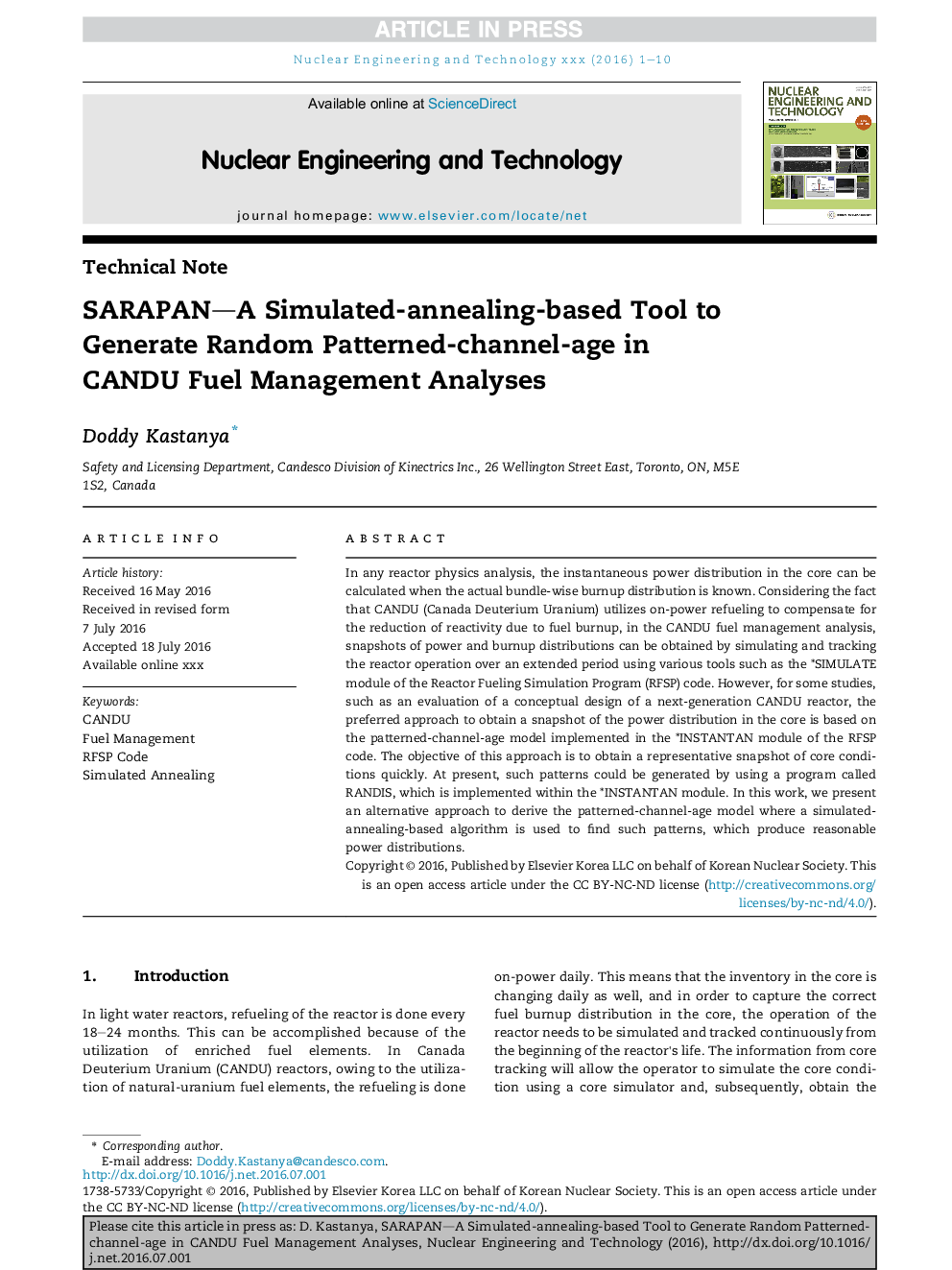| Article ID | Journal | Published Year | Pages | File Type |
|---|---|---|---|---|
| 5478141 | Nuclear Engineering and Technology | 2017 | 10 Pages |
Abstract
In any reactor physics analysis, the instantaneous power distribution in the core can be calculated when the actual bundle-wise burnup distribution is known. Considering the fact that CANDU (Canada Deuterium Uranium) utilizes on-power refueling to compensate for the reduction of reactivity due to fuel burnup, in the CANDU fuel management analysis, snapshots of power and burnup distributions can be obtained by simulating and tracking the reactor operation over an extended period using various tools such as the *SIMULATE module of the Reactor Fueling Simulation Program (RFSP) code. However, for some studies, such as an evaluation of a conceptual design of a next-generation CANDU reactor, the preferred approach to obtain a snapshot of the power distribution in the core is based on the patterned-channel-age model implemented in the *INSTANTAN module of the RFSP code. The objective of this approach is to obtain a representative snapshot of core conditions quickly. At present, such patterns could be generated by using a program called RANDIS, which is implemented within the *INSTANTAN module. In this work, we present an alternative approach to derive the patterned-channel-age model where a simulated-annealing-based algorithm is used to find such patterns, which produce reasonable power distributions.
Related Topics
Physical Sciences and Engineering
Energy
Nuclear Energy and Engineering
Authors
Doddy Kastanya,
